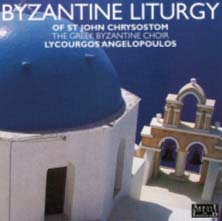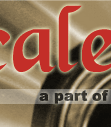
"Saint John Chrysostom" | "The divine Liturgy" | ΕΛΛΗΝΙΚΑ

"The Byzantine Music"by Mihalis Adamis
 Byzantine Music is the music composed for and sung in the Greek Orthodox Church. It is monophonic music performed by the psaltis (chanter) or a male chorus and the isocrates (vocal drone) without instrumental accompaniment.
Byzantine Music is the music composed for and sung in the Greek Orthodox Church. It is monophonic music performed by the psaltis (chanter) or a male chorus and the isocrates (vocal drone) without instrumental accompaniment.
In the long tradition of Byzantine music, the period that starts in the middle of the 5th century around such centres as Constantinople, Jerusalem, Alexandria and Antioch, is a very important one.
At this time and up to the 11th century almost the whole of the poetic texts of the hymns as well as their setting to music was completed by the poet-musicians.
The most famous among them are Romanos the Melode (5th-6th centuries), Sophronios the patriarch of Jerusalem (638), Andrew of Crete (7th century) and loannis of Damascus (7th-8th centuries) to whom tradition attributes the foundation of the eight-echoi (melody-types) system and the coding of the existing hymns accordingly.
In the following centuries, the music developed, keeping, however, during its lengthy growth a steady reference to the models established during the first period, especially the ethos indicated by the echos (melody-type) to which the hymn was originally composed. In the twelfth century, the music was written in a plain, rather strict style and was syllabic in character (each syllable of the text corresponds to a note in the melody). In this Middle Byzantine period, the notation was completed into an adequate system of signs that indicate by what interval the melody should move upwards or downwards, having set the first note by a special sign (in contrast to the Western music notation in which the pitches have a steady position on the staff).
Later the chant became more elaborate and this trend came to a peak in the 13th-15th centuries with the maistores (masters) who composed in a highly melismatic style (a whole musical phrase may correspond to one syllable of the text).
To meet the needs of such an ornate style, the notation was enriched by several new signs to indicate the manner of performing the ornaments.
A great composer of this period was loannis Koukouzelis (c. 1300). An important development occurred in the following centuries and this was the differentiation of the eight echoi and of the impression of each of them.
The melismatic idiom remained in use, yet with a more improvisatory character. Regarding the notation, in the period following the fall of Constantinople (1453), numerous attempts were made to improve the system so as to notate in more detail the melos and its ornaments.
One outstanding attempt was made by Peter Lampadarios (c.1730-1777) who, furthermore, undertook the most important task of notating almost the whole of the music of the Offices of the Church, which constituted the oral tradition as it had existed to this time. He also composed music in a plain, clear style and the whole of his output constitutes the main body of the Greek Orthodox Church music to the present day.
In 1814, Chrysantos, Chourmouzios and Grigorios Protopsaltis developed the most accurate, so far, system of notation, which is still in use today.
Through the transcription to this system, the music written down or originally composed by P. Lampadarios, his contemporaries and his successors, has existed to the present day as a live tradition.
"Saint John Chrysostom" | "The divine Liturgy" | ΕΛΛΗΝΙΚΑ

|































